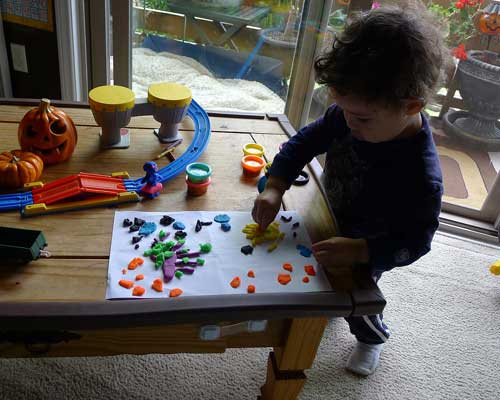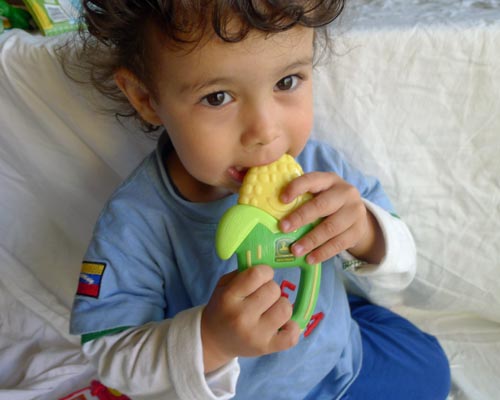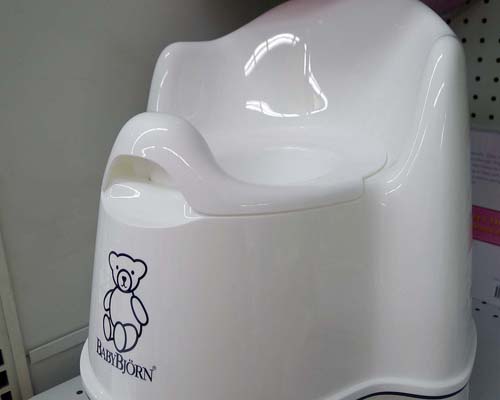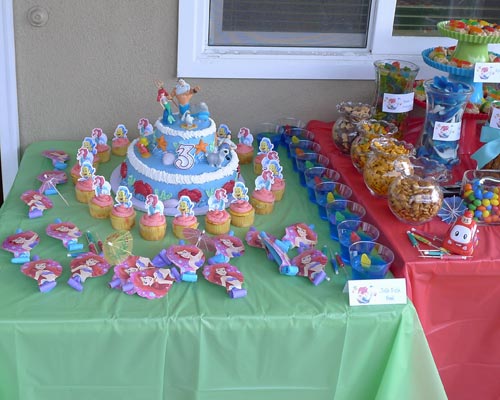Note: Baby milestones are a great way to keep track of the developmental progress of your child and also experience the excitement and fun that comes with seeing each marker reached for the first time.
- Gross motor skills, examples include crawling, walking, jumping.
- Fine motor skills, examples include coloring, stacking blocks, picking up objects.
- Social interaction, examples include smiling at you, playing with other children.
- Thinking, examples are rationalizing situations, figuring out puzzles.
- Language, examples are being able to speak, listen and comprehend.
One of the first major baby milestones is eye contact which occurs usually around six weeks and eight weeks. As a parent the eye contact milestone is significant because it shows your baby is paying attention to you. Furthermore, eye contact is one of the first signs of communication and a clear indicator of neurological progress.
The social smile is two-way smile that is considered an early communication milestone that is a major bonding moment between parent and child. Your baby smiles because you smiled. The social smile is an important developmental milestone since it shows the child’s ability to see things that are close, understand what it is he or she saw, and respond with a smile.
Cooing and babbling are important communication milestones. About 2 months after birth your baby will take the leap from communicating by crying to cooing, a sign the brain’s speech center in the frontal lobe is developing. Talking and describing your actions to your baby can encourage cooing.
Whereas the cooing sound comes from the baby’s throat, the next step is to use the tongue and mouth to babble. Babbling normally takes place before six months and after six months the ability to respond to someone talking by babbling is noticed as a significant language developmental milestone.
Once a baby starts to realize she can control her arms and hands, the ability to reach for something and to grab something becomes a major motor-development milestone. Babies will reach and grab for things they are curious about, so it is a good opportunity to promote that interest by offering the child different, safe, things to reach for, touch and grab.
The pulling up to a stand milestone that occurs around nine to ten months is the precursor to your baby being able to walk. The legs and body must be strong and balanced enough for your baby to stand upright making this an important gross motor development. A baby will try to stand because of interest in needing to be taller to reach or see something. It is a good parenting idea to allow your baby plenty of time and opportunities to stand by not keeping the child for large portions of the day in a car seat, in a stroller and being carried around.
The very noticeable pincer grasp begins around six months and by twelve months is well established. The rudimentary pincer grasp at first will be with all the fingers and the thumb. With time and practice a parent will see the child’s increased pincer grasp ability as they use just one finger and the thumb to pick up a single small object like a Cheerio.
The baby milestone of stacking blocks is an example of a fine motor skill that involves coordination, balance and a well developed pincer grip. By 12 months a baby should be able to build a two block tower using his or her finger and thumb and then be able to knock it over. At this same time a baby should be able to nest a smaller object inside a larger object and then take the smaller object out, thus learning the concept of big and little.
Gesturing is a way for baby to communicate what he or she is thinking. A gesture is a nonverbal communication in which visible bodily actions are used to share a thought or message with someone. Encourage your child to gesture by gesturing yourself whenever possible.
Teething can begin at different times during the first nine months but eventually that first tooth will break through the gum. Teething is usually painful for a baby and you will see your child chewing on a lot of different things and drooling more often. Help by giving him a teething ring and start cleaning the teeth and gums once a day with a baby toothbrush. The first tooth is often the lower central incisor, which is a bottom tooth in the middle of the mouth.
One of the most famous baby milestones is when the child speaks the first word. Most children start saying words around twelve months and many children can say 30-40 words by the time they reach eighteen months old, but it is also very common for a child to know less than 10 words by this age. Being able to say a word shows an understanding that the child can associate that objects have names and that specific words are symbols for specific objects.
Children seem to love to pretend play and when this behavior begins that is a very important baby milestone for girls and boys. Often a child will copy the actions of parents like talking on the phone. A positive, learning environment with a variety of different things and activities will help your child to develop and reach these baby milestones.
Developmental Delay
A great reason to pay attention when developmental milestones are reached is to make sure your child is not having a developmental delay. Many children will not reach every milestone on the chart at the expected age and are totally okay as they are just taking their time and babies develop at their own pace. However, a developmental delay can happen if a child does not reach a milestone by the upper age range of what is considered normal. A developmental delay is when a child can not do specific task by a specific age that have been determined to show age appropriate development. Your child may reach certain milestones quicker than the time line shows and slower than the time line shows, but remember it is best to discuss any concerns with your child’s pediatrician.
The baby’s actions in key areas can show what type of developmental delay they are showing.
Look for signs of possible problems and trust your instinct because the sooner you and your pediatrician can recognize a problem the faster the problem can be fixed. One thing to look for is baby’s desire to reach for nearby things and trying to put objects into his or her mouth. These are normal behaviors for babies so it could show a developmental problem if a baby is not trying to touch and eat things. A baby should be displaying a desire to progress into new movements like lifting chest/head, rolling-over, sitting-up, standing-up, crawling, cruising, and walking. If you notice your child’s lack of interest and progression in reaching these major motor skill milestones you should talk to your pediatrician. Babies are supposed to notice sounds, react to visual stimuli, and make eye contact so if your child is not responding to these things you should talk to your pediatrician. Verbally your child should copy common sounds, coo and babble about the time when the baby milestone date chart shows but if the child is past that time you should talk to your pediatrician.
Potty Training
Toilet training milestone varies in age among babies with some having the cognitive skills and physical ability to begin as early as 18 months while others may not be ready until the age of four. Boys generally take longer to be ready than girls. Many children will be potty trained in just a few days though it is normal for potty training to take a few months. Usually it takes a child from three to six months to be potty trained with some children needing a year of toilet training to get it right.
Physically a toddler will need to be able to hold his urine for two hours which is an indication that the child has developed sufficient bladder muscles. A child must also be able to recognize when he or she needs to use the bathroom, which is often a challenge for a child who has never had to think of this before. Being able to pull down clothes is also a helpful skill when potty training for a child. A child will show readiness often by wanting to imitate the bathroom habits of siblings or parents and by displaying a desire for independence.






